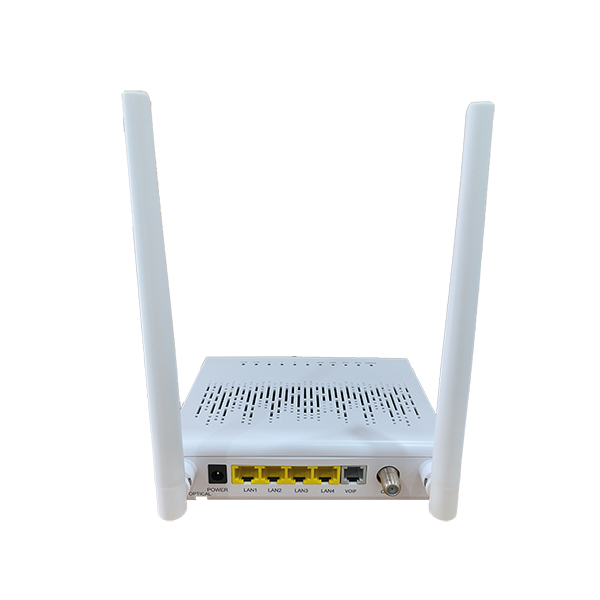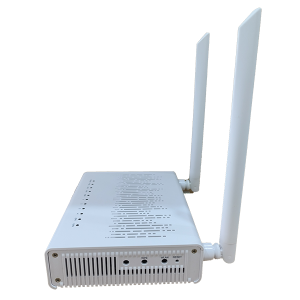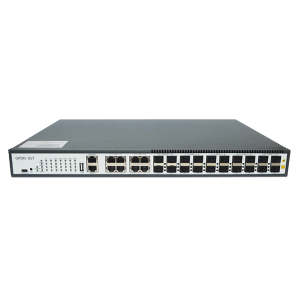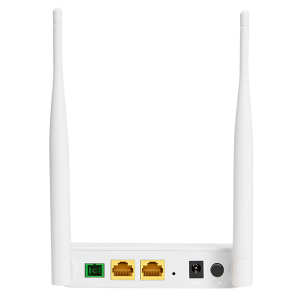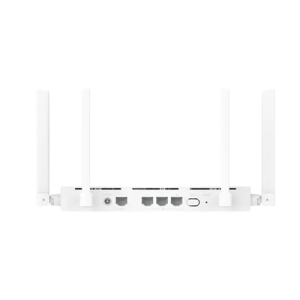Products
LIMEE’s evolutionary GPON Technology: Exploring the Advantages of Layer 3 OLT and FTTH Optical Terminals
We’ve been committed to offering easy,time-saving and money-saving one-stop purchasing service of consumer for LIMEE’s evolutionary GPON Technology: Exploring the Advantages of Layer 3 OLT and FTTH Optical Terminals, We welcome you to definitely be a part of us during this path of making a affluent and productive business enterprise together.
We’ve been committed to offering easy,time-saving and money-saving one-stop purchasing service of consumer for China Olt and Gpon Olt, When It produced, it making use of the world’s major method for reliable operation, a low failure price, it appropriate for Jeddah shoppers choice. Our enterprise. s situated inside the national civilized cities, the website traffic is very hassle-free, unique geographical and financial circumstances. We pursue a “people-oriented, meticulous manufacturing, brainstorm, make brilliant” company philosophy. Strict good quality management, fantastic service, affordable cost in Jeddah is our stand around the premise of competitors. If needed, welcome to make contact with us by our web page or phone consultation, we’ll be delighted to serve you.
Product Characteristics
LM241TW4, dual-mode ONU/ONT, is one of the XPON optical network units, support GPON and EPON two modes of self-adaptation. Applied to FTTH/FTTO, The LM241TW4 can integrate wireless functions conforming to 802.11 a/b/g/n technical standards. It also supports 2.4GHz wireless signal. It can provide users with more efficient data transmission security protection. And provide cost-effective TV service through 1 CATV port.
The 4-port XPON ONT allows users to access the high-speed Internet connection XPON port, which is shared with the Gigabit Ethernet port. Upstream 1.25Gbps, downstream 2.5/1.25Gbps, transmission distance up to 20Km. With speeds of up to 300Mbps, LM240TUW5 uses an external omnidirectional antenna to maximize the wireless range and sensitivity, so that you can receive wireless signals anywhere in your home or office and you can also connect to the TV, which can enrich your life.
FAQ
Q1: What is the difference between EPON GPON OLT and XGSPON OLT?
The biggest difference is that XGSPON OLT support GPON/XGPON/XGSPON, Faster Speed.
Q2: How many ONTs can your EPON or GPON OLT connect to
A: It depends on ports quantity and optical splitter ratio. For EPON OLT, 1 PON port can connect to 64 pcs ONTs maximum. For GPON OLT, 1 PON port can connect to 128 pcs ONTs maximum.
Q3: What is the max transmission distance of the PON products to the consumer?
A: All the pon port’s max transmission distance is 20KM.
Q4: Could you tell What’s the difference of ONT &ONU?
A: There are no difference in essence, both are users’ devices. You could also say that ONT is part of the ONU.
Q5: What is FTTH/FTTO?
What is FTTH/FTTO?
In today’s digital-centric world, high-speed internet connectivity is no longer a luxury but a necessity. As the demand for faster and more reliable internet continues to grow, telecommunications companies continue to explore innovative technologies to meet customer needs. Gigabit Passive Optical Network (GPON) is a technology that is revolutionizing the broadband industry. In this article, we will delve into the advantages of GPON, specifically its use of 16-port, three-layer OLT and FTTH optical terminals to significantly improve network efficiency and performance.
GPON is a fiber-optic network architecture that delivers high-speed Internet, voice, and video services to residential and business users. It uses a point-to-multipoint topology, utilizing passive optical splitters to distribute data to multiple customers simultaneously. GPON uses a Layer 2 transport mechanism to transmit data, providing impressive bandwidth of up to 2.5 Gbps downstream and 1.25 Gbps upstream.
The core of the GPON network is the optical line terminal (OLT). The OLT’s Layer 3 capabilities enable efficient allocation of network resources and intelligent packet routing. With an OLT that supports Layer 3 capabilities, telecom providers can ensure optimized traffic, reduce congestion, and enhance network performance. Additionally, Layer 3 OLTs provide advanced security features such as IP filtering and firewall protection to protect the network from potential threats.
The fiber-to-the-home (FTTH) model is enabled by GPON technology and uses fiber optic terminals to provide direct fiber connections to individual homes or businesses. Equipped with multiple 16 ports, these small, compact devices can easily handle the distribution and termination of optical signals, ensuring seamless connectivity throughout the network. FTTH optical terminals act as a bridge between optical fiber and Ethernet, enabling high-speed data transmission and reliable telecommunications services.
GPON has many advantages when combined with three-layer OLT and FTTH optical terminals. First, it provides unparalleled bandwidth capacity to meet consumers’ growing data needs. The technology also reduces power consumption, making it an environmentally friendly solution. Additionally, GPON’s scalability enables cost-effective network expansion and future-proof infrastructure.
In short, the combination of 16-port, three-layer OLT and FTTH optical terminal has completely changed the broadband industry. GPON technology brings high-speed connectivity, efficient resource management and enhanced security to telecommunications networks. By adopting GPON, service providers can provide their customers with seamless Internet, voice and video services that meet and exceed their expectations in this digital era.
| Hardware Specification | ||
| NNI | GPON/EPON | |
| UNI | 1x GE(LAN) + 3x FE(LAN) + 1x POTs(optional) + 1x CATV + WiFi4 | |
| PON Interface | Standard | GPON: ITU-T G.984 EPON: IEE802.3ah |
| Optical Fiber Connector | SC/APC | |
| Working Wavelength(nm) | TX1310, RX1490 | |
| Transmit Power (dBm) | 0 ~ +4 | |
| Receiving sensitivity(dBm) | ≤ -27(EPON), ≤ -28(GPON) | |
| Internet Interface | 1 x 10/100/1000M auto-negotiation1 x 10/100M auto-negotiationFull/half duplex modeAuto MDI/MDI-XRJ45 connector | |
| POTS Interface (option) | 1 x RJ11ITU-T G.729/G.722/G.711a/G.711 | |
| WiFi Interface | Standard: IEEE802.11b/g/nFrequency: 2.4~2.4835GHz(11b/g/n)External Antennas: 2T2RAntenna Gain: 5dBiSignal Rate: 2.4GHz Up to 300MbpsWireless: WEP/WPA-PSK/WPA2-PSK、WPA/WPA2Modulation: QPSK/BPSK/16QAM/64QAMReceiver Sensitivity:11g: -77dBm@54Mbps
11n: HT20: -74dBm HT40: -72dBm |
|
| Power Interface | DC2.1 | |
| Power Supply | 12VDC/1A power adapter | |
| Dimension and Weight | Item Dimension:167mm(L) x 118mm(W) x 30mm (H)Item Net Weight:about 230g | |
| Environmental Specifications | Operating Temperature: 0oC~40oC (32oF~104oF)Storage temperature: -40oC~70oC (-40oF~158oF)Operating Humidity: 5% to 95%(Non-condensing) | |
| Software Specification | ||
| Management | Access Control, Local Management, Remote Management | |
| PON Function | Auto-discovery/Link detection/Remote upgrade software ØAuto/MAC/SN/LOID+Password authenticationDynamic Bandwidth Allocation | |
| Layer 3 Function | IPv4/IPv6 Dual Stack ØNAT ØDHCP client/server ØPPPOE client/Passthrough ØStatic and dynamic routing | |
| Layer 2 Function | MAC address learning ØMAC address learning account limit ØBroadcast storm suppression ØVLAN transparent/tag/translate/trunkport-binding | |
| Multicast | IGMPv2 ØIGMP VLAN ØIGMP transparent/Snooping/Proxy | |
| VoIP |
Support SIP Protocol |
|
| Wireless | 2.4G: 4 SSID Ø Ø2 x 2 MIMO ØSSID broadcast/hide Choose | |
| Security | DOS, SPI FirewallIP Address FilterMAC Address FilterDomain Filter IP and MAC Address Binding | |
| CATV Specification | ||
| Optical connector | SC/APC | |
| RF, optical power | -12~0dBm | |
| Optical receiving wavelength | 1550nm | |
| RF frequency range | 47~1000MHz | |
| RF output level | ≥ 75+/-1.5 dBuV | |
| AGC range | 0~-15dBm | |
| MER | ≥ 34dB(-9dBm optical input) | |
| Output reflection loss | >14dB | |
| Package Contents | ||
| Package Contents | 1 x XPON ONT, 1 x Quick Installation Guide, 1 x Power Adapter | |
Products categories
-

Phone
-

Email
-

Whatsapp
-

Skype
-

Top


